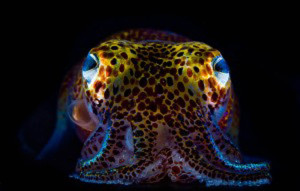
Researchers at the University of Bristol in the U.K. have developed smart materials that behave like an artificial skin and can mimic the camouflage of cephalopods, such as squid. The development has potential applications for military and rescue work.
As explained in Interface, the Royal Society’s journal, the team detailed the design, mathematical modeling, simulation and analysis of a dynamic biomimetic pattern-generation system. The system uses local rules in artificial chromatophore cells (that contain pigment) to help them sense their surroundings and then manipulate change in appearance. The team assessed whether the system could produce a range of different patterns.
The ultimate goal of the research, according to a report at MaterialsToday.com, is to create an artificial skin that can mimic such pattern generation for a range of devices, such as cloaking suits and dynamic illuminated clothing. These suits could find uses for blending into different environments, while the framework could also help in signaling—for instance, luminescent distress signals that help in search and rescue operations.
The skin is fabricated from thin sheets of a smart material called “electroactive dielectric elastomer”—a soft, rubbery material that can be controlled electrically. It can mimic the action of biological chromatophores—small pigmented cells embedded on cephalopods’ skin that expand and contract to change skin color and texture, which they use for rapid and versatile camouflaging and signaling from networks of pigmented, muscle-driven chromatophore cells.
In nature, these cells actuate and affect skin coloring, allowing them to adopt different and complex skin patterns that work to distract and divert predators.
 TEXTILES.ORG
TEXTILES.ORG


